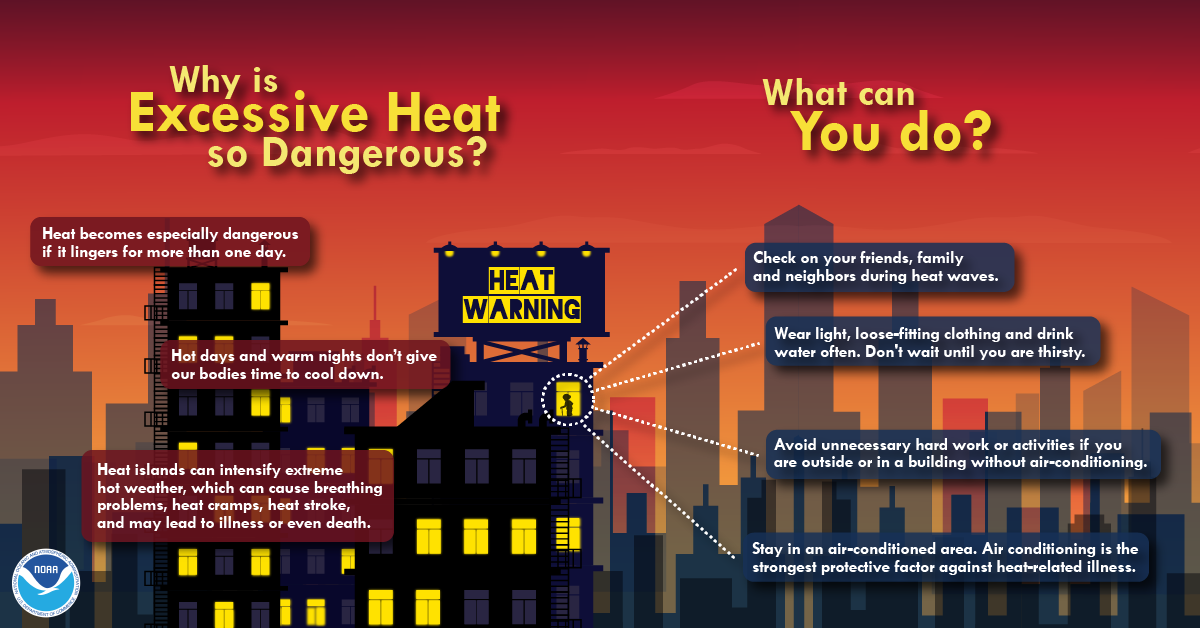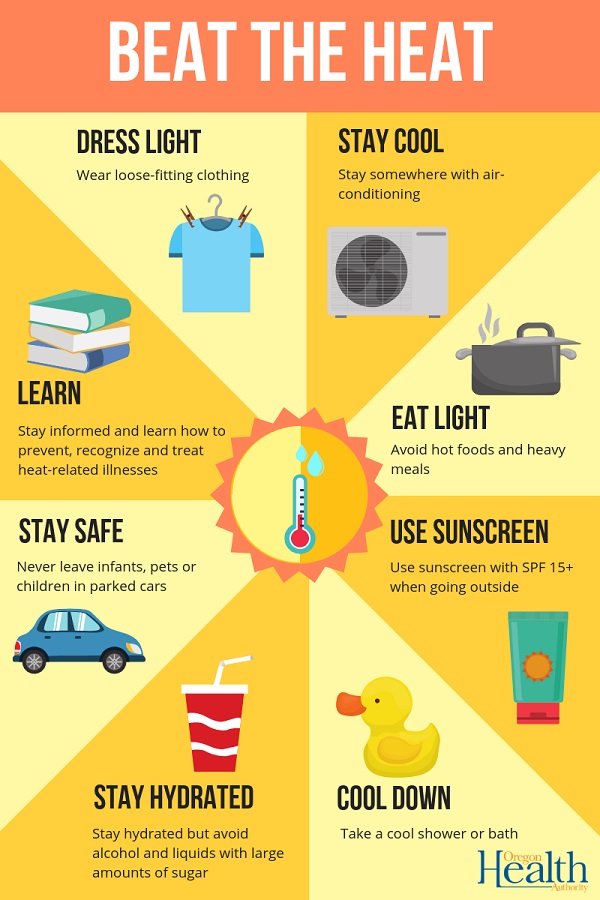Reasons For The Lack Of Excessive Heat Warnings In Weather Reports

Table of Contents
Forecasting Challenges and Limitations
Predicting and issuing accurate excessive heat warnings is far more complex than it might seem. Several factors contribute to the difficulties in providing consistently precise forecasts.
Difficulty in Precise Prediction
Heatwaves are complex weather phenomena, influenced by various factors like high-pressure systems, humidity, the urban heat island effect, and even subtle changes in wind patterns. Predicting the exact intensity and duration of a heatwave with pinpoint accuracy remains a significant challenge for meteorologists.
- Uncertainties in model outputs lead to varying predictions: Weather models, while sophisticated, are not perfect. Slight variations in input data can lead to significantly different predictions of heatwave intensity and duration.
- Local microclimates significantly impact heat intensity: A heatwave forecast for a broad region might not accurately reflect the conditions in a specific location, especially in areas with significant topographical variations or urban heat island effects. The concrete jungle, for example, can experience significantly higher temperatures than surrounding rural areas.
- Difficulty in predicting heatwave onset and dissipation: Determining the precise start and end times of a heatwave is challenging. Heatwaves often build gradually, making early detection difficult. Similarly, predicting when a heatwave will break can be equally tricky.
Data Gaps and Regional Variations
Access to real-time temperature data is crucial for accurate forecasting, but this data is not uniformly available across all regions. This disparity significantly impacts the accuracy and reliability of excessive heat warnings.
- Sparse weather station networks in some regions: Many areas, particularly in rural or developing countries, lack the dense network of weather stations necessary for detailed temperature monitoring. This results in data gaps that can hinder accurate forecasting.
- Limited access to advanced forecasting technologies: Access to advanced weather modeling and prediction technology is not equally distributed globally. Developing nations often lack the resources to invest in and maintain these crucial technologies.
- Challenges in integrating data from different sources: Accurately forecasting heatwaves requires integrating data from various sources, such as satellites, weather stations, and even social media. Combining and analyzing these diverse data sources effectively is often challenging.
Communication and Prioritization
Even with accurate forecasts, effectively communicating the risk of excessive heat to the public is paramount. However, several factors complicate the process.
Competing Weather Events
Weather services often face the difficult task of prioritizing warnings. More immediate and visually destructive events like hurricanes, tornadoes, and flash floods often take precedence, potentially overshadowing heat warnings, even though heat is a silent killer.
- Public perception of heat as less immediately dangerous: The public often perceives heat as less immediately dangerous than other weather phenomena, leading to a lower perceived urgency for heat warnings.
- Limited resources for disseminating multiple warnings simultaneously: Weather services have limited resources for communicating multiple warnings at once. Prioritizing the most immediately life-threatening events is sometimes necessary.
- Prioritization based on potential for widespread damage and loss of life: Warnings are often prioritized based on the potential for widespread damage and loss of life. While heatwaves can cause significant mortality, the impact is often spread over a larger area and time period compared to more concentrated events like tornadoes.
Effective Communication Strategies
Translating complex meteorological data into easily understandable and actionable warnings is crucial for effective heatwave preparedness. Current communication methods could be significantly improved.
- Need for clear and concise language in warnings: Warnings should use straightforward language, avoiding technical jargon. The severity and potential impact of the heatwave should be clearly explained.
- Importance of using multiple communication channels (social media, apps, etc.): Utilizing a variety of communication channels ensures that warnings reach the broadest possible audience, including those who may not rely solely on traditional media.
- Public awareness campaigns to educate about heat dangers: Proactive public awareness campaigns are crucial in educating the public about the dangers of excessive heat and how to protect themselves.
Resource Constraints and Funding
The capacity of meteorological services to produce detailed and frequent heatwave forecasts and warnings is often limited by insufficient resources.
Limited Personnel and Funding
Many meteorological services operate with limited personnel and funding, impacting their ability to provide effective heatwave forecasts and warnings.
- Insufficient funding for research and technology upgrades: Lack of funding hinders the development and implementation of improved forecasting models and technologies.
- Understaffing in forecasting and communication departments: Understaffing limits the capacity of meteorological services to issue timely and detailed warnings.
- Need for increased investment in weather monitoring infrastructure: Increased investment in weather monitoring infrastructure, including more weather stations and advanced sensor technology, is crucial for improving forecast accuracy.
Conclusion
While predicting and communicating excessive heat warnings presents significant challenges, improving the situation is crucial to mitigate the devastating effects of heatwaves. The lack of more frequent warnings is a complex issue stemming from forecasting limitations, communication priorities, and resource constraints. Addressing these issues requires increased investment in weather forecasting technology, improved communication strategies, and enhanced public awareness about the dangers of extreme heat. Let's demand better, more frequent and effective excessive heat warnings to protect our communities. Contact your local meteorological service to learn more about their heatwave forecasting and communication protocols, and advocate for increased resources dedicated to improving heatwave preparedness. We need to make sure that heatwave warnings are treated with the same urgency as other severe weather events.

Featured Posts
-
 Recuperar Tu Dinero Reembolso De Boletos Ceremonia 2025 Ticketmaster
May 30, 2025
Recuperar Tu Dinero Reembolso De Boletos Ceremonia 2025 Ticketmaster
May 30, 2025 -
 Understanding The Reduction Of Excessive Heat Warnings
May 30, 2025
Understanding The Reduction Of Excessive Heat Warnings
May 30, 2025 -
 Zheng Qinwens Madrid Open Upset Loss To Potapova
May 30, 2025
Zheng Qinwens Madrid Open Upset Loss To Potapova
May 30, 2025 -
 Le Ministre Tabarot Confirme L Ouverture Du Tunnel De Tende Pour Juin
May 30, 2025
Le Ministre Tabarot Confirme L Ouverture Du Tunnel De Tende Pour Juin
May 30, 2025 -
 The Legacy Of The Punch Trumps Continued Fight Against Higher Education
May 30, 2025
The Legacy Of The Punch Trumps Continued Fight Against Higher Education
May 30, 2025
